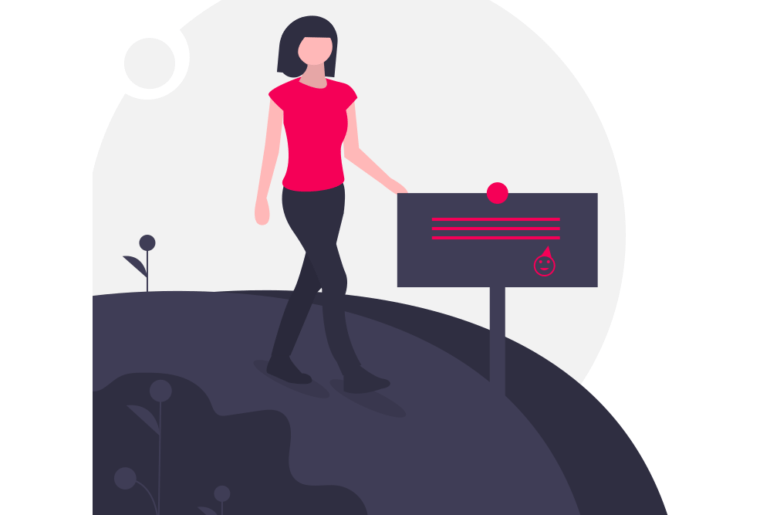A walled garden refers to a platform or ecosystem in which the provider has complete authority over the content or media, and offers limited access to align with its own preferences, ultimately aiming to establish a monopoly. In this post, we have unlocked walled garden meaning and how it impacts the digital advertising market.
Ever wondered how Google manages to know the exact problem faced by users? Not just Google, services provided by its competitors like Amazon and Facebook are no less astonishing. The answer to such success is access to the right user data.
Specifically, in advertisement technology (ad tech), data plays an important role in defining the success of a business. This is when ‘walled garden’ as a term is used to define the use of data by these organizations.
What is a Walled Garden in Advertising?
“What is a walled garden” is one of the most common questions asked in the advertising ecosystem.
A walled garden is an organization which keeps its technology, information, and user data to itself, with no intention of sharing it. To define walled garden, it is a closed ecosystem, operated by people within the ecosystem, without the involvement of an outside organization.
In ad tech, the exchange of user data via cookie syncing between parties is necessary in order to show relevant ads and maximize revenue. However, walled garden makes the job tricky for this exchange.
Google, Facebook, and Amazon are three ad tech giants, who pocket more than half of all the digital ad spend. While Google partners up with other firms (small or large), Facebook and Amazon like to keep their walls as high as possible when it comes to data sharing.
History of Walled Garden (Origin of Walled Gardens)
The term ‘walled garden’ was first coined by John Malone, the founder of Tele-Communication Inc. later acquired by AT&T. This term is, since, being used by various industries, but mainly in the context of a closed platform.
The first example of a walled garden recorded in the 70s. Bell System, a telecommunication industry in the USA decided to design a hardware specifically for their own network users. The hardware (phones) is supposed to be leased from the company rather than owned by the users.
Fast forward a few decades, you can see walled gardens everywhere. From ISPs to local ice-cream stores, every business likes to keep a record of their users in their own way.
Let’s Talk About Google/Facebook/Amazon Triopoly
Google and Facebook, together, claim 59% of digital ad spending in year 2019.
The reason why users (publishers and advertisers) are drawn to these walled gardens is the accuracy offered by them. When it comes to user targeting, the pool of unique first-party and third-party data becomes the driving factor for users.
Google is known to offer holistic products like AdManager to become one-stop solution for publishers. And Facebook is responsible to lead 83% of social ads, hence, is popular among advertisers trying to reach audience via social platforms.
These facts should help you understand the success of this duopoly:
- Facebook has 2.38 billion monthly users and Google has 1.5 billion Gmail account holders—comprising users of different ages, genders, locations, and interests.
- These user profiles (with first party IDs) make it very easy to target users across devices, which could be very challenging for the rest of ad tech.
Now imagine the times you have used your mobile phone or desktop while logged into Gmail and Facebook. All those time, every Google search you made is recorded by Google. And every app you used in your mobile, Facebook known about them.
Now let’s talk about the Triopoly, which started when Amazon jumped in.
Amazon’s rapid ascent in the digital ad market challenges the dominance of Google and Facebook, creating a potential three-way competition. In 2020, Amazon’s share surpassed 10%, growing by 52.5% from the previous year, securing its place as the third-largest ad tech platform by revenue.
According to Nicole Perrin from eMarketer, Amazon ads became crucial for sellers in 2020, offering cost-effective opportunities during periods of product shortages. This trend expanded beyond marketplace players, as more brands and retailers turned to Amazon amid the pandemic’s ecommerce surge.
What sets Amazon apart is its access to purchase intent data, unlike Google and Facebook. While the latter know user searches and clicks, Amazon tracks actual purchases, offering valuable insights for e-commerce businesses.

How do Walled Gardens Impact Publishers?
As matter of fact, any service provider can create its own walled garden including publishers.
Some publishers, like the New York Times, have their own walled garden. These publishers create a community of user by designing a subscription funnel and pushing users in it. They charge readers a fee in order to access their premium content. This is to make sure that a reader/user only gets the information via their site and not social or referral shares.
Generally, large publishers with significant influence and reputation in market are able to pull off this trick. This allows them to have better control over the user data while keeping up with website monetization via different methods like programmatic advertising, ad block monetization, and paywall implementation.
A walled garden can be a challenge for new and small businesses (publishers). If you don’t share your data, then nobody (other demand side platforms, Supply Side Platforms, and ad exchanges) will share their data with you.
But do publishers need outside data?
Most publishers don’t really need much data from outside. They have their own content driving traffic. It’s the advertisers and marketers who are in constant need of user data to make their advertising and marketing campaigns successful.
But in order to enable targeting, publishers must share user data for advertisers to correctly target the audience. This, in return, serves publishers with better revenue generation with display ads. Basically, when it comes to advertising, publishers have no other way but to share user data.
However, the small niche publishers can get started with their own walled garden. Start by creating an audience base of people interested in same topics, conduct surveys and research; share them across platforms to further attract niche audience.
Pros and Cons of Walled Garden
Walled gardens choke the market of data and resources. But at the same time, they also keep user data secure. Which brings us to its pros and cons.
Advantages of Walled Garden
Accuracy
Consider Facebook, it has an advantage to accurately track its users and know about their likes and dislikes drilled down to the level of even their life events. Advertisers can use this information about the users to show relevant ads and increase conversions.
Cross-device tracking
A user can access his/her account using multiple devices. While accessing their accounts, users might change devices but profiles remain the same. Hence, walled gardens with user accounts have the benefit of cross-device targeting.
Security
Walled gardens (generally) maintain the privacy of their users. Let’s take Facebook in consideration again, it allows advertisers to run targeted campaigns. However, it doesn’t share the data with advertisers about where their ads are appearing. Marked with the recent Cambridge Analytica Scandal and with better data practices, unless a user clicks on the ad campaign, the advertiser will not know which user viewed the ads.
Disadvantages of Walled Garden
Difficult to Manage
Most walled gardens have their in-house management teams, designers, and developers. They manage everything, from employees and users to software and tools, can be troublesome. Imagine the number of tools you use for your business—CRM, CMS, DMP, and more. Now imagine, building this software in-house, while constantly updating and debugging it. Sounds hectic, right?
Competing with similar businesses
The competition to provide the best services to the user while competing with other similar service providers can be tricky. The brand needs to keep coming up with new and innovative ideas (targeting, ad types, reporting functionality) to keep users happy and engaged, without users being distracted by others targeting the same users. This becomes more difficult in a walled garden because it needs to maintain a private-ness, while still needing information about competitors.
In Closing
In ad tech, walled gardens have a monopoly over the market, ruling over data and resources. Independent companies are stuck dealing with the little what they have in terms of users, control, and money.
Walled gardens like Google and Facebook are earning higher margins year-on-year while maintaining a firm grip on the market. These companies offer incomparable digital advertising scale and targeting and those in the independent ecosystem might feel choked out of the information and spend coming their way. Considering the influence of these businesses, it’s hard to expect equality in advertising market for independent businesses, for now.
Frequently Asked Questions
A walled garden is an organization which keeps its technology, information, and user data to itself, with no intention of sharing it. In simpler words, a walled garden is a closed ecosystem, operated by people within the ecosystem, without the involvement of an outside organization.
Walled garden ensures better accuracy, security, and cross-device targeting.
Walled gardens choke the market of data and resources. They are difficult to manage and require brands to frequently come up with innovative ideas (targeting, ad types, reporting functionality) to keep users engaged.

Deepak has a keen eye for detail and a deep understanding of the ad tech landscape. Whether it’s through in-depth articles, thought-provoking insights, or compelling storytelling, he’s dedicated to helping people navigate the complex world of ad tech with the simplicity of his words.



![Top 12 Ad Networks in India Every Publisher Should Know [2024 Edition] Indian Ad Networks](https://www.adpushup.com/blog/wp-content/uploads/2019/09/undraw_Note_list_re_r4u9-270x180.png)



